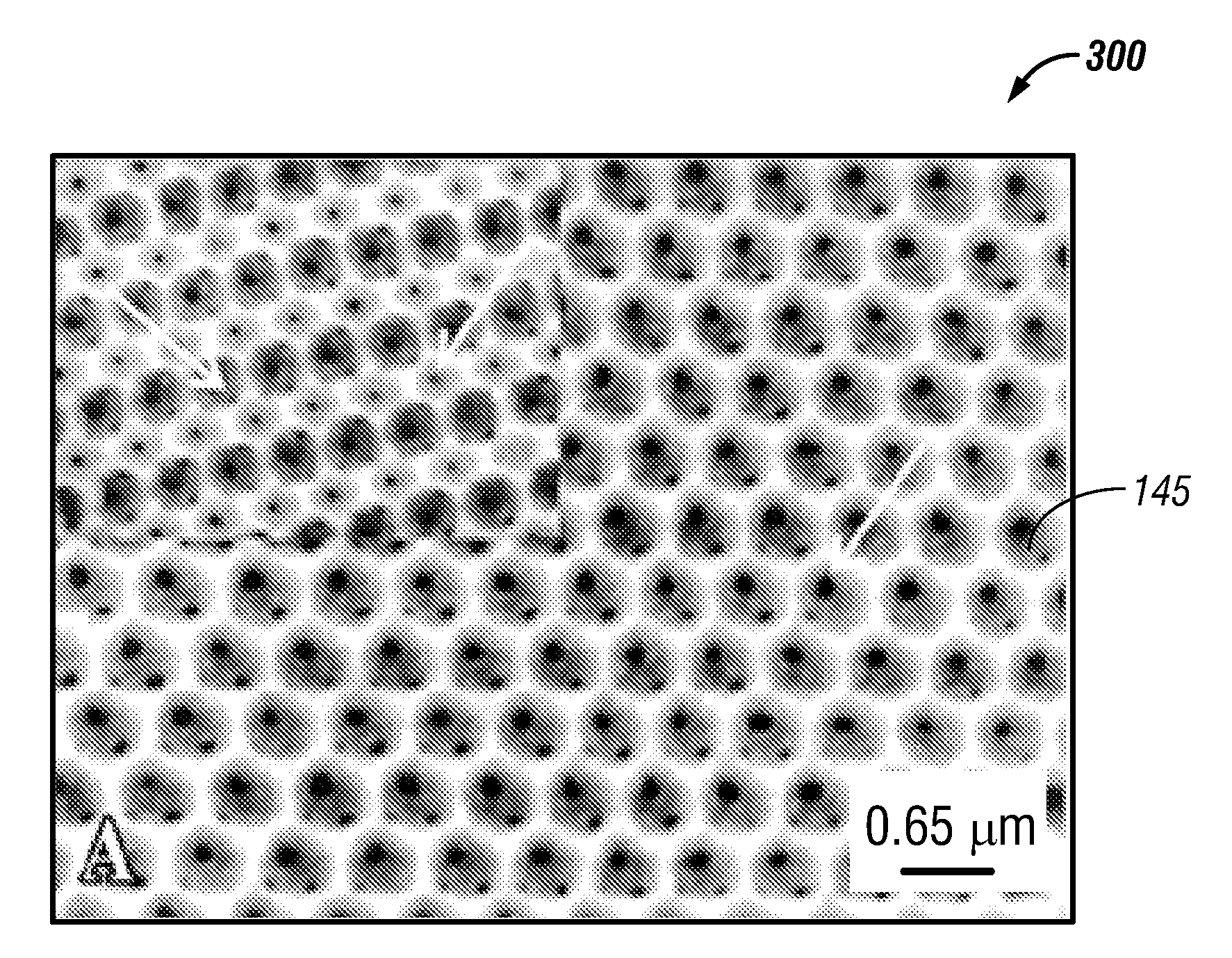Three-dimensionally ordered macroporous sensor apparatus and method
a macroporous and sensor technology, applied in the field of sensing materials, can solve the problems of high fluent resistance of the sensing material, limited use of the sensor and device fabricated from zeolites and other microporous materials, and inability to meet the needs of chemical separation, sensing, and other device-oriented applications, so as to improve the specific surface area, enhance the sensitivity and response time, and reduce the resistance to flow
- Summary
- Abstract
- Description
- Claims
- Application Information
AI Technical Summary
Benefits of technology
Problems solved by technology
Method used
Image
Examples
Embodiment Construction
[0015]The particular values and configurations discussed in these non-limiting examples can be varied and are cited merely to illustrate at least one embodiment and are not intended to limit the scope thereof.
[0016]The disclosed embodiments illustrate a method for forming a macroporous structure, preferably a three-dimensional ordered macroporous (3DOM) structure, of many compositions. Significantly, the disclosed approach generally involves the use of a precursor of a sensing material, preferably materials constituting, for example, low viscosity liquids or compounds that are soluble in water, alcohols, or other solvents, which are further compatible with a direct opal film. The disclosed embodiments are based on precipitation within the interstitial spaces of the opal film, subsequent chemical conversion of the precursors if necessary, and removal of the material forming the opal film. The resultant macroporous material generally includes a framework with voids (e.g., pores) and w...
PUM
| Property | Measurement | Unit |
|---|---|---|
| diameter | aaaaa | aaaaa |
| size | aaaaa | aaaaa |
| thickness | aaaaa | aaaaa |
Abstract
Description
Claims
Application Information
 Login to View More
Login to View More - R&D
- Intellectual Property
- Life Sciences
- Materials
- Tech Scout
- Unparalleled Data Quality
- Higher Quality Content
- 60% Fewer Hallucinations
Browse by: Latest US Patents, China's latest patents, Technical Efficacy Thesaurus, Application Domain, Technology Topic, Popular Technical Reports.
© 2025 PatSnap. All rights reserved.Legal|Privacy policy|Modern Slavery Act Transparency Statement|Sitemap|About US| Contact US: help@patsnap.com



